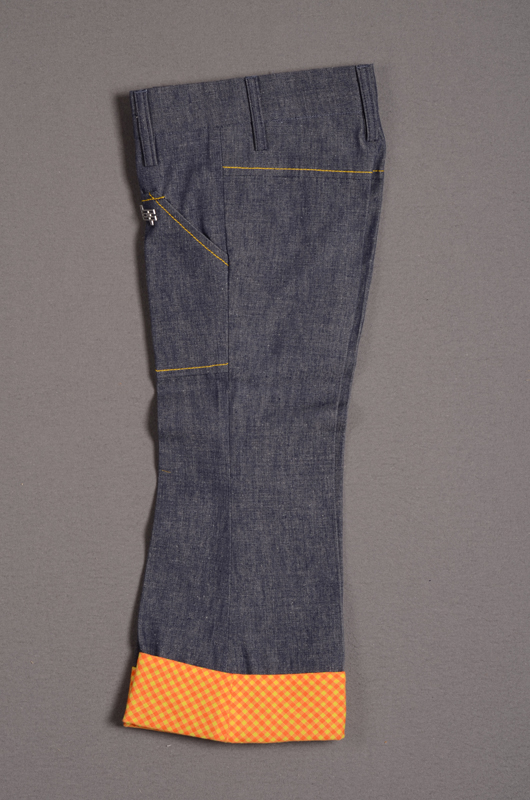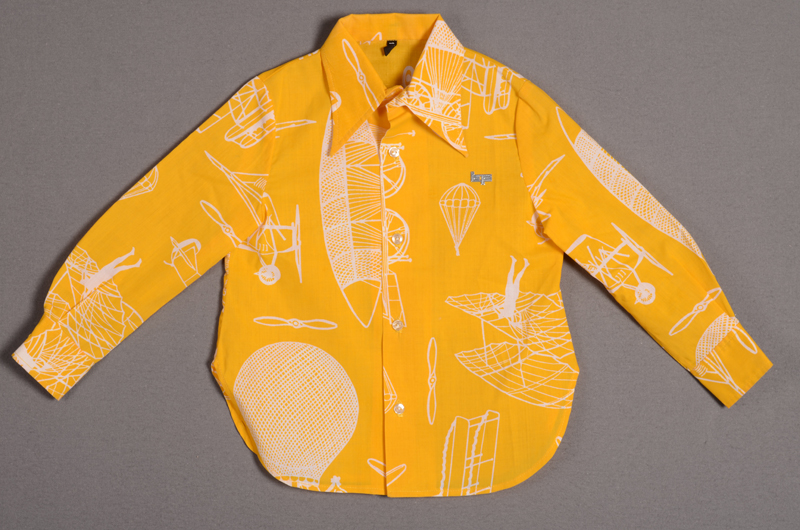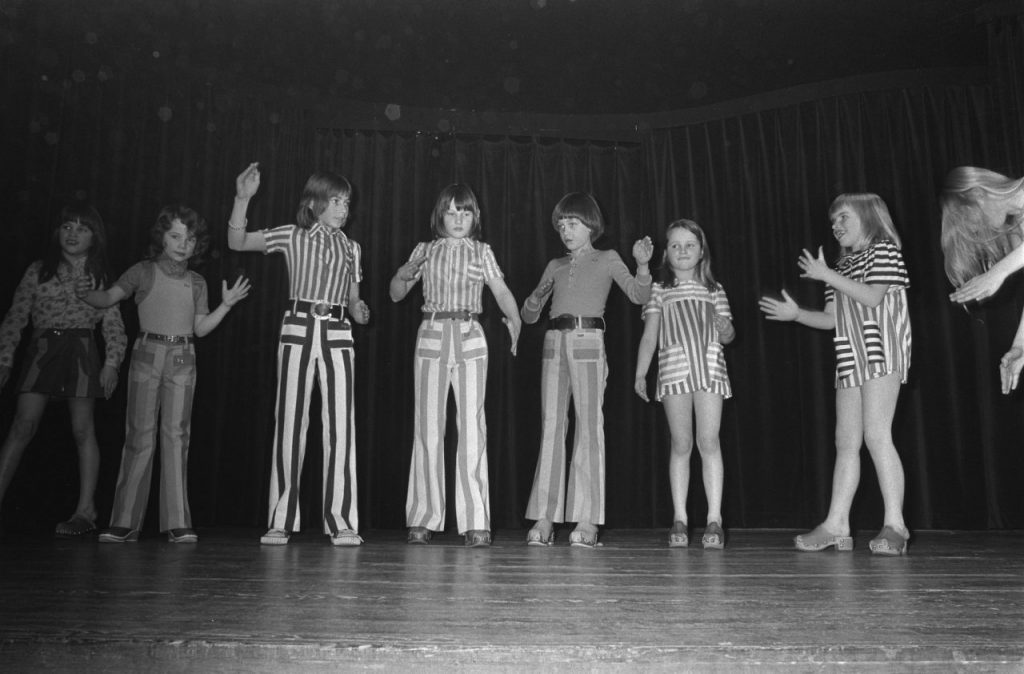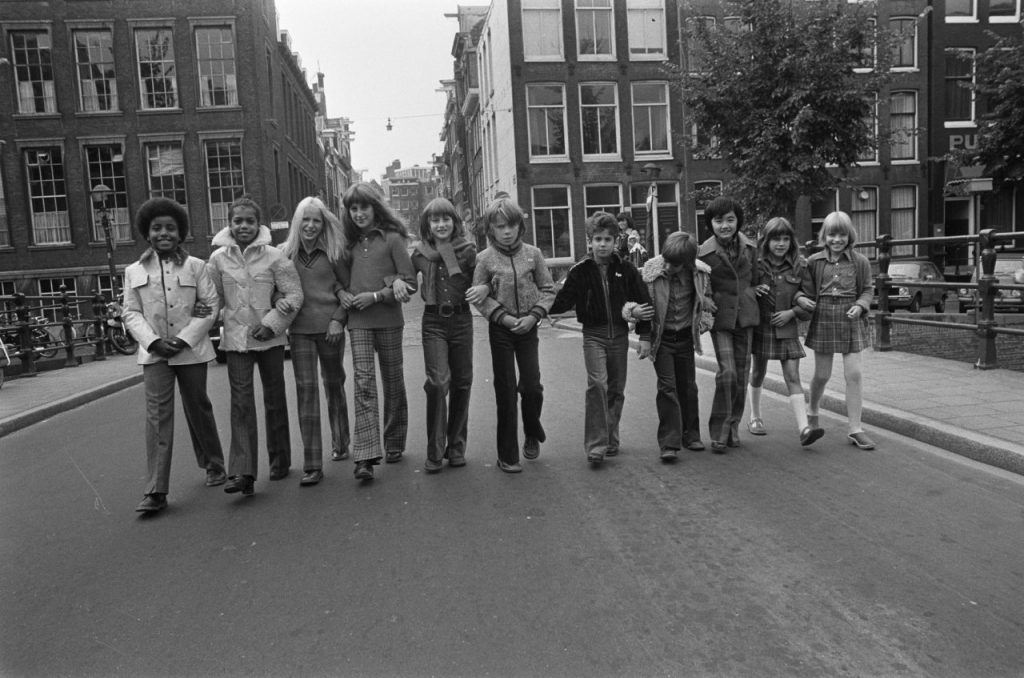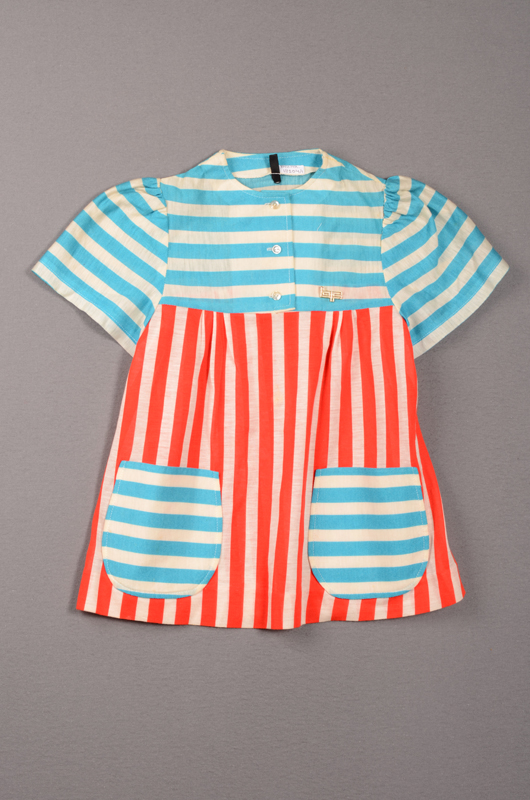B.F., a label to call her own
Before striking off on her own, Barbara Farber earned a living by sketching sewing patterns for Margriet magazine and making paper dresses. But once she made the leap, she quickly began to draw people’s attention with her designs. Among those who noticed was Vroom en Dreesmann, the Dutch department store chain, who approached her in 1968 to design a childrenswear collection for the anniversary of its branch in The Hague. The collection — her first to be mass-produced — was sold under the name “Barbara and Edward”. Within a year, Farber would launch a comprehensive collection under her very own name.[4]
Hallmarks of Farber’s designs
A common feature of Farber’s designs was the endless possibilities they offered for the mixing and matching of items, and their suitability for boys and girls from kindergarten age right through primary school. In fact, Farber can be credited for introducing the Dutch to the idea of mixing and matching kids’ clothes with the launch of the collection Kombineer-Maar-Kollekties. And while the Dutch newspaper de Volkskrant‘s fashion critic snootily declared it a “very American idea that appears ideally suited to unimaginative mums”[5], other critics were impressed by the way it allowed people to create the impression of owning a varied wardrobe.
In addition, the clothes were often made using locally produced natural materials, such as denim and unbleached and printed cotton or corduroy. The durability of these materials made the clothes easy to maintain, infinitely washable and perfect for the rough-and-tumble play ubiquitous to childhood. The clothes were distinctively practical and sporty, and came in bright colour combinations and cheerful designs.
All items bore the BF logo, which the kids loved, according to Farber. But above all, the cuts were simple, and functional elements such as patch pockets, zips and cuffs were tailored fashionably. Thus, fashion trends in the adult clothing market were adapted to the practical needs of children.[6]


